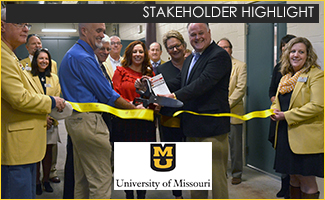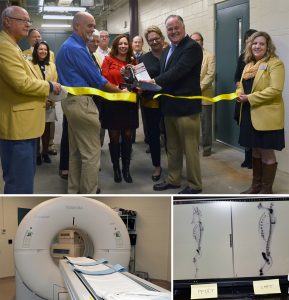
The University of Missouri has a new weapon in the fight against disease. That same tool also will prove crucial to the fight against world hunger. Housed in a new imaging core in the College of Veterinary Medicine, the combination positron emission tomography (PET) scanner and computed tomography (CT) scanner—the PET/CT system—will improve accuracy and speed in the diagnosis and treatment of cancer, cardiovascular disorders and Lou Gehrig’s disease, as well as provide new capabilities for plant science research.
Fighting Cancer
Positron emission tomography is an imaging test that reveals how organs and tissues are functioning. Using nuclear medicine tracers developed at the MU Research Reactor (MURR), scientists can observe metabolic processes in the body in real time. Computed tomography is an imaging procedure used to create detailed anatomic pictures or scans inside the body.
When combined in the PET/CT scanner, these functional and structural scans will give Mizzou clinicians and scientists a powerful diagnostic picture, and allow them to track how diseases evolve and progress.
The equipment will allow oncologists, neurologists, internal medicine specialists, and surgeons to provide a new level of care to current patients. It also will provide a powerful tool in current animal clinical trials, including cancer and neurology trials that ultimately will lead to advancements in animals and humans.

Fauna and Flora
Developing corn varieties that are resistant to pests is vital to sustain the estimated 9 billion global population by 2050. Using the PET/CT scanner and advanced nuclear methods at Mizzou, researchers in could help crop breeders develop new pest-resistant lines of corn and make significant strides toward solving global food shortages.
State and regional plant and nuclear scientists in interdisciplinary studies at Mizzou will be able to radioactively ‘tag’ plant nutrients and use the PET/CT scanner to essentially ‘watch’ their movement through metabolic pathways in plant structures. Plant scientists will be able to improve utilization of these plant cell nutrients to improve root growth and to stimulate pest resistance in plants.